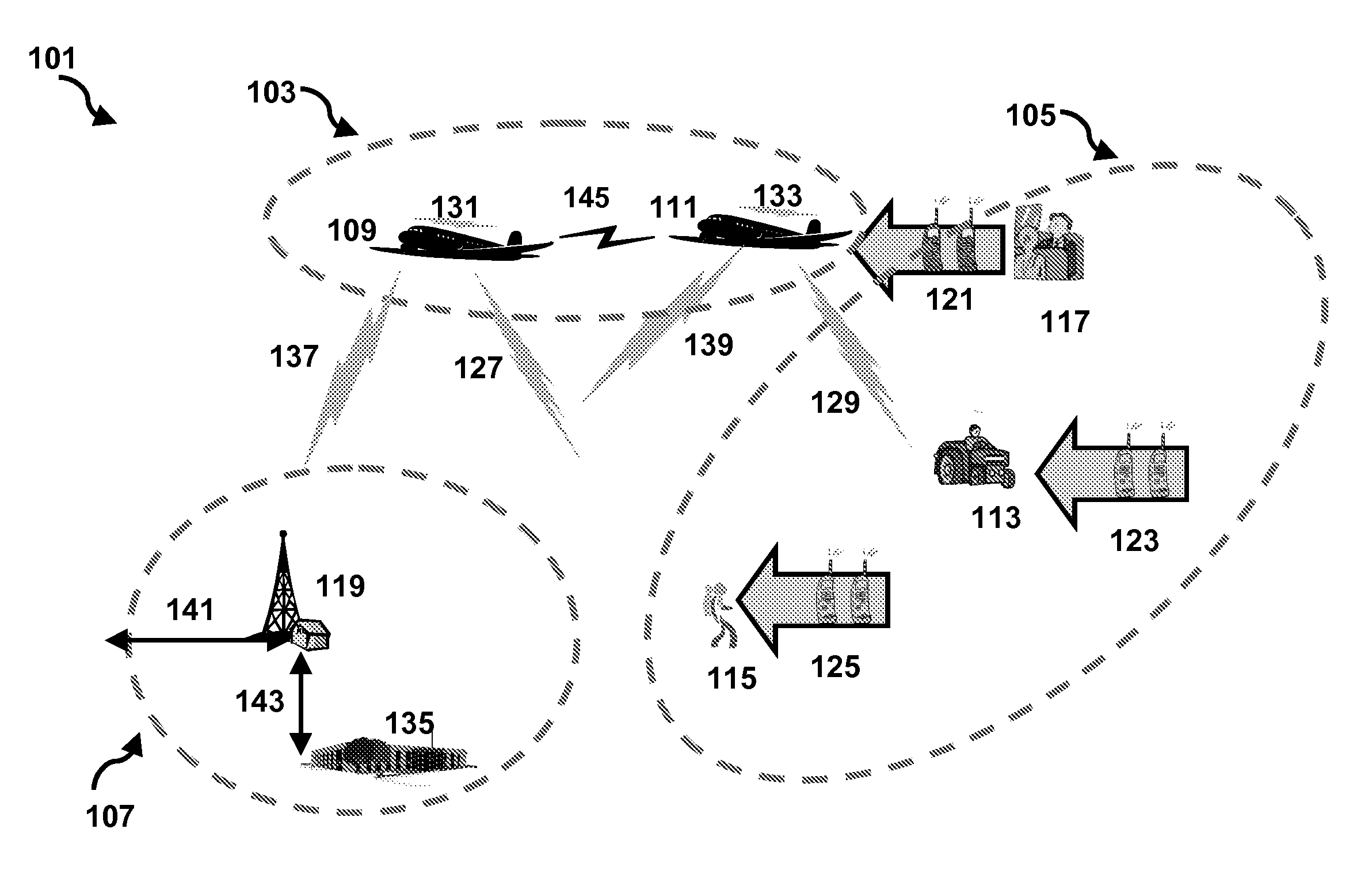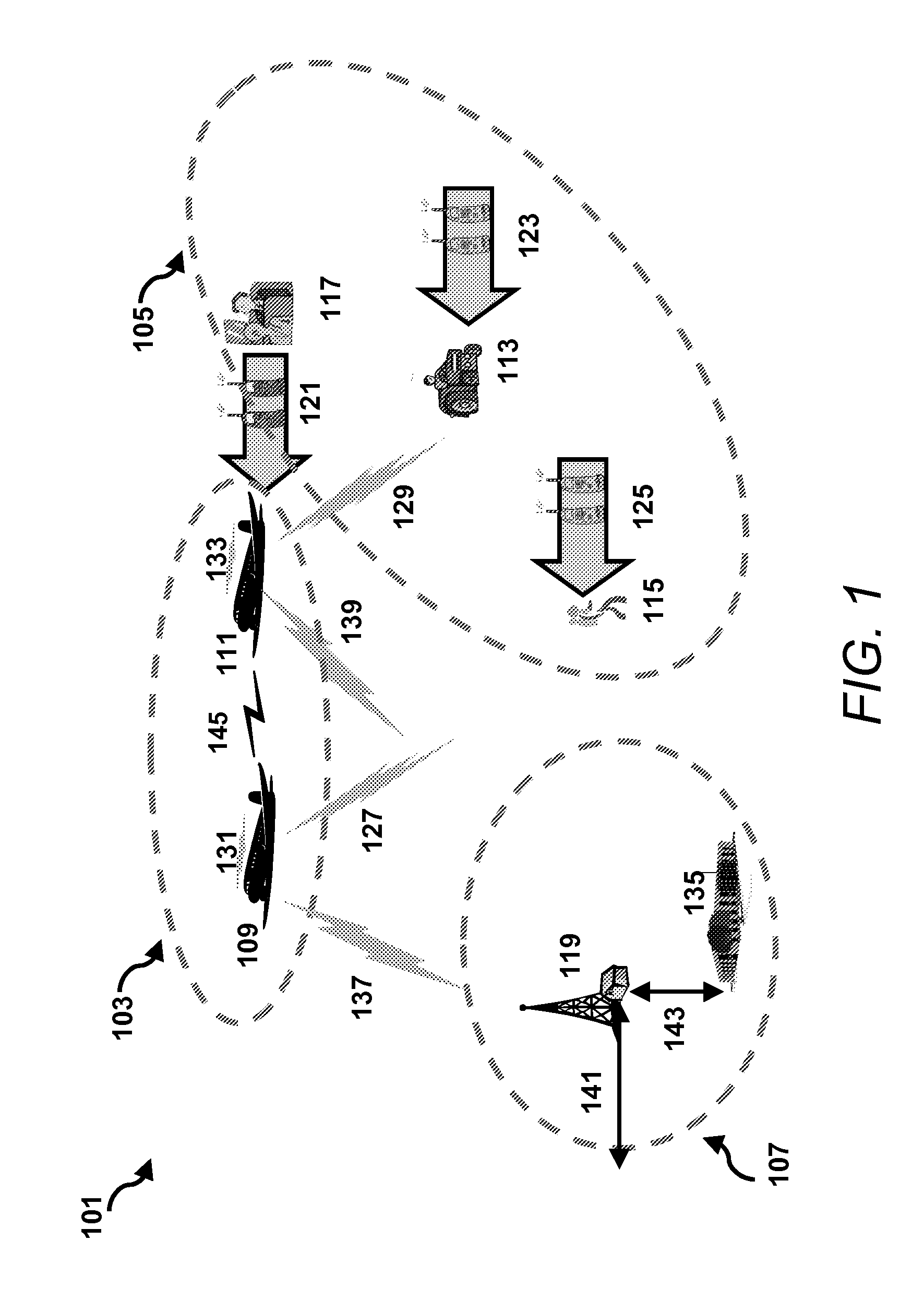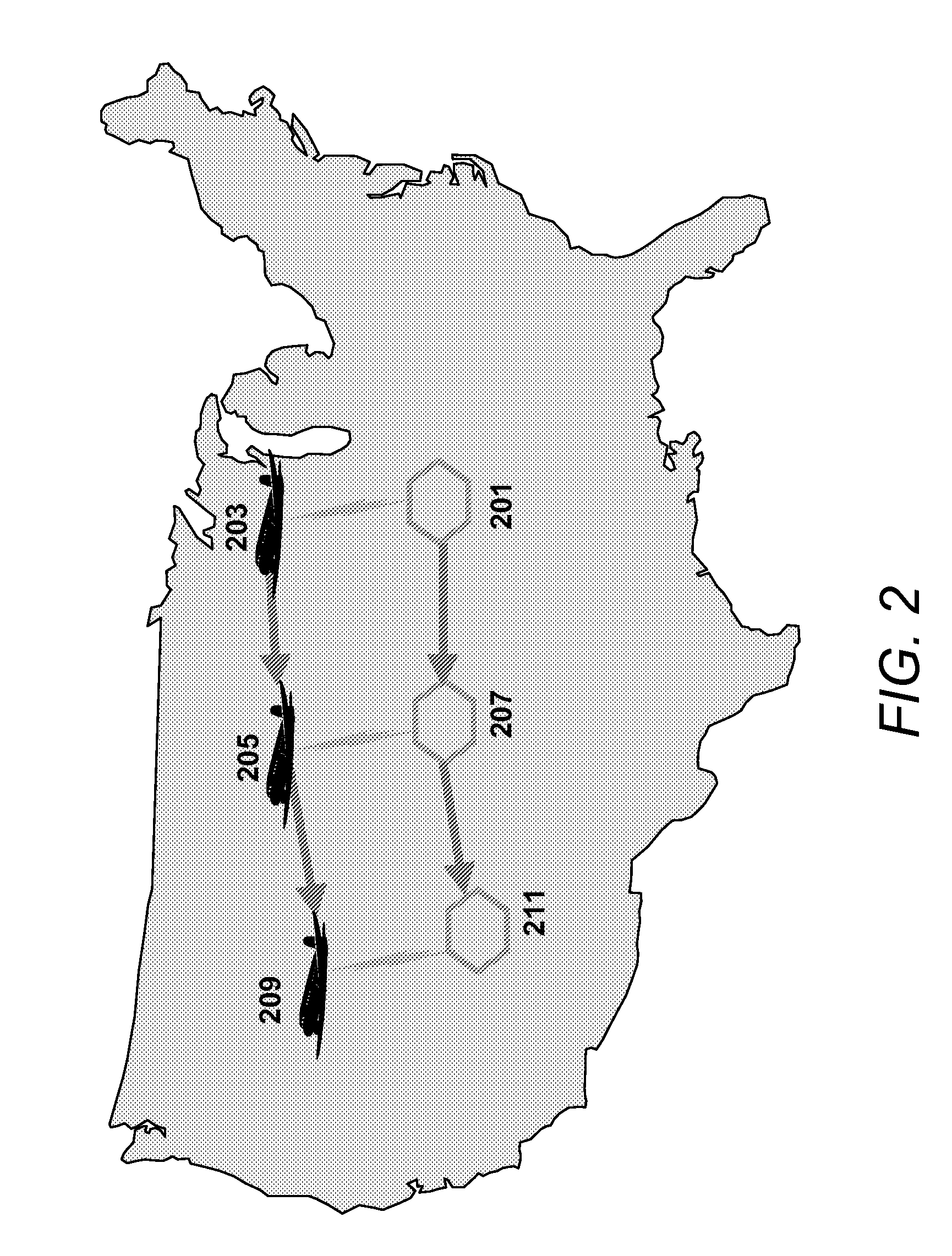Aircraft based cellular system
a cellular system and aircraft technology, applied in the field of radio communication systems, can solve the problems of not all user equipment supports dual mode operation, the existing terrestrial cellular infrastructure cannot be expanded to accommodate the population not currently served, and the coverage of domestic cellular telephony is not universally available, so as to achieve the effect of simple and inexpensive on-board equipment for aircra
- Summary
- Abstract
- Description
- Claims
- Application Information
AI Technical Summary
Benefits of technology
Problems solved by technology
Method used
Image
Examples
Embodiment Construction
[0045]In the following description of the preferred embodiment, reference is made to the accompanying drawings which form a part hereof, and in which is shown by way of illustration a specific embodiment in which the invention may be practiced. It is to be understood that other embodiments may be utilized and structural changes may be made without departing from the scope of the present invention.
1. Overview
[0046]There are typically over 3000 commercial aircraft operating over the United States during normal daily operating hours. Operating at altitudes above 30,000 feet, these aircraft have a field of view to earth of over 200 miles, and as a result, these aircraft offer an excellent platform for wireless communications towers that can provide digital wireless communications coverage over most of the United States. In addition, aircraft equipped with wireless communications capability can also provide digital wireless communications services (such as cellular telephony) to onboard ...
PUM
 Login to View More
Login to View More Abstract
Description
Claims
Application Information
 Login to View More
Login to View More - R&D
- Intellectual Property
- Life Sciences
- Materials
- Tech Scout
- Unparalleled Data Quality
- Higher Quality Content
- 60% Fewer Hallucinations
Browse by: Latest US Patents, China's latest patents, Technical Efficacy Thesaurus, Application Domain, Technology Topic, Popular Technical Reports.
© 2025 PatSnap. All rights reserved.Legal|Privacy policy|Modern Slavery Act Transparency Statement|Sitemap|About US| Contact US: help@patsnap.com



